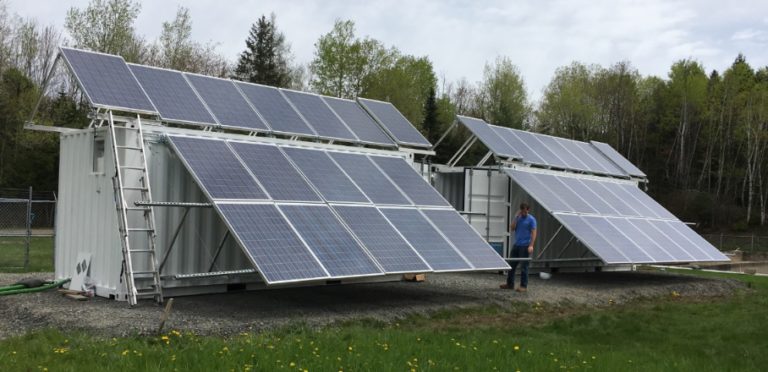Canadian Military Validates Solar Powered Wastewater Treatment
Published on by Water Network Research, Official research team of The Water Network in Technology
Island Water Technologies was contracted by the Canadian Military to provide a modular wastewater treatment unit that uses renewable power and energy storage and would be suitable for remote camps and humanitarian operations.
Self-powered on-site processing of wastewater provides a unique capability for distributed wastewater mangement. This holds the potential to reduce haulage costs and eliminates resources typically required to collect and haul wastewater from remote locations.
The REGEN 20 solar powered wastewater treatment solution integrates technological advances that significantly reduce the cost and energetic input of the wastewater treatment process. Integrating renewable energy and advances in wastewater treatment with improvements in remote automation significantly reduces the inefficiencies in current wastewater treatment processes.
At IWT we offer this validated solution for remote work camps, humanitarian and military applications.
The Canadian Military completed testing with Colonel Nicolas Pilon stating:
“The system was fully powered by solar energy, typically drawing only 2.5 kWh/m3. Overall, the system required only minimal operation and maintenace and exhibited great potential”
Introduction
The REGEN 20 is a world first, solar powered wastewater treatment system for decentralized wastewater treatment applications. This modular treatment technology leverages advances in Fixed Film wastewater treatment and biosensors with a renewable power management system to provide stand-alone, self-powered wastewater treatment. This autonomous treatment system can be deployed to remote population clusters and provide a packaged solution for on-site wastewater treatment.
Island Water Technologies was contracted by the Canadian Military to provide a modular wastewater treatment unit that uses renewable power and energy storage and would be suitable for remote camps and humanitarian operations.
The unit was tested over an 8-week period by the Canadian Military. The REGEN 20 was installed on March 25th by the Canadian Military.
Under the instructions of IWT the unit was supplied raw municipal sewage from a local municipal lift station. This document provides a description of the REGEN 20 technology and 3rd party testing provided by the Canadian Military.

Solar powered wastewater treatment solution
REGEN Process Description – Novel “single-pass” wastewater treatment process design
The system is designed with reduced process complexity, and to provide additional functionality, enabling a reduction in overall tankage. This was accomplished by re-evaluating each step and achieving more removal / treatment per tank. The result is a streamlined single-pass wastewater treatment design. Complexity, (i.e. moving parts) is removed where possible to keep operator maintenance and energy costs to a minimum.
- Improved fixed-film polymer materials:
As part of identifying enabling technologies we have analyzed all current solutions for wastewater treatment and have identified fixed film solutions as offering the best option for reducing the energetic input (kWh/m3) to the system. IWT carried out 2 years of R&D focused on identifying polymer materials that are best suited to biofilm formation.
Our studies have shown an increase in treatment rates of up to 50% when compared to control samples, as shown in Figure 3.
Improved polymer materials have been identified or developed that can allow for the enhanced removal of BOD, TSS and TKN. As shown in Figure 4, the fixed film was developed to have both a polished and treated side. The material alterations were tested by Carleton University.
This unique setup allows for improved solids settling on the polished side, while providing additional surface area for bacteria growth on the treated side.
When the media is used in the reactor, the fixed film is angled along the flow-path in the reactor. The fixed film serves a dual purpose of lamella plate type clarification at the same time as providing a surface area for biological growth.
This structure essentially creates “tubes” which the wastewater is forced through. The tube “top” is treated specifically to provide additional surface area for biological growth. The tube “bottom” is smooth to allow solids the chance to accumulate and slide down the media and settle out of solution.
Read full article: Island Water Technologies
Media
Taxonomy
- Treatment
- Treatment Methods
- Water Access
- Technology
- Solar Energy
- Water Supply
- water treatment